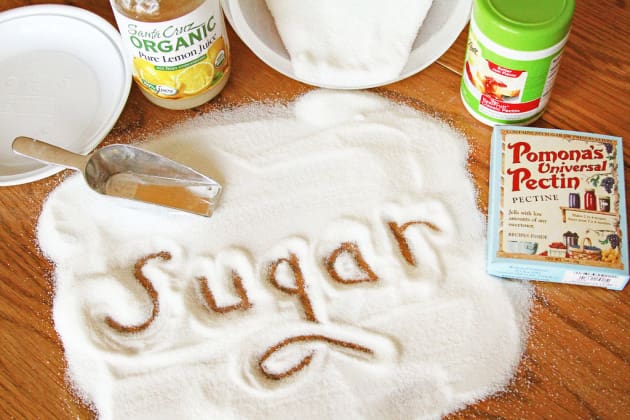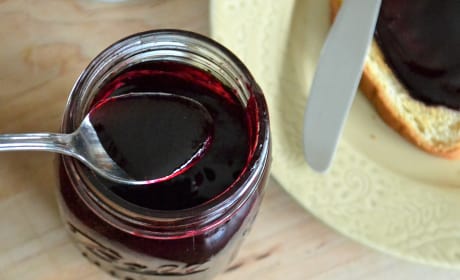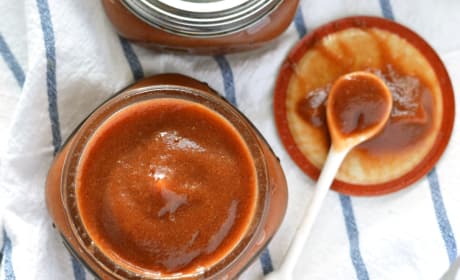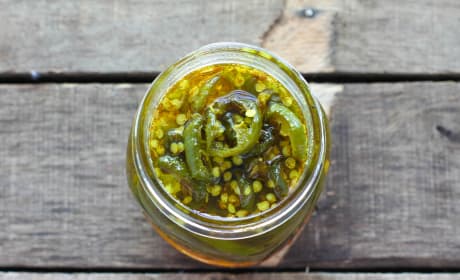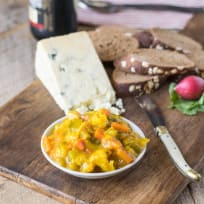Canning Q&A: How Does Sugar Work?
Tracy R. | SugarcrafterEver wondered if you could reduce the sugar in your jam? How about the role that sugar plays in your preserves? Today, our canning guru is discussing your sugar-related questions in another Canning Q&A!
I've lost count of how many times I've heard this question at my farmers market table: "Do you have any sugar-free jam?" New-to-canning friends will also often ask if they can reduce the amount of sugar in their own homemade preserves. To help clear things up, the Canning Question I'll be discussing today is: What is the role of sugar in preserves?
To answer that question, let's take a step back. It's important to understand that in order for your preserves to set successfully, you must have a proper ratio of four things: fruit, pectin, acid, and sugar.
First, there's the fruit. Obviously, this is the star of your soft spread. It also provides part of the pectin and acid needed for your spread to achieve a nice gel, or "set," which makes a jam a jam instead of a compote or a syrup. Fruit should be ripe for the best flavor and color.
Second, there's the pectin: this is what causes your fruit to gel. Some fruits, such as tart apples, have enough natural pectin to gel successfully on their own when cooked into a soft spread - but others, such as strawberries, require added pectin to achieve a firm enough set to hold their shape. Commercial pectins help achieve this set, and come in both powdered and liquid form (but note that one is not interchangeable with the other).
Many people prefer to use these since the cooking time is shorter and there is no guessing about the gel stage, and also because the yield from a given amount of fruit is greater. However, you also need to add more sugar to bond with the added pectin, so the natural fruit flavor of the preserve may be affected.
There are also commercial pectins available for use in making products with no added sugar or reduced sugar, which I will discuss below.
Third, there's the acid. This is also needed for gel formation, as well as to aid in preserving your fruit. For example, adding more sugar won't make a recipe safe if you don't have the right amount of acid for the fruit you're preserving - this is part of the reason why it's important to always use a recipe from a trusted source, such as the USDA or the Ball Complete Book of Home Preserving.
And finally, the sugar. Sugar plays a very important role with set. When your soft spread is cooked to 220°F, it reaches the gel stage - this is the point at which the sugar bonds with the pectin in the fruit as well as any added pectin in the recipe, and changes in texture - this is what causes the jam to gel, or become spreadable.
So, whether you're working with commercial pectin or not, if you've ever tried to drastically reduce the amount of sugar in a recipe and you end up with a watery jam, this is why. You didn’t have enough sugar to bond with the pectin in the recipe to elevate the temperature enough to cook to the gel stage point. To quote So Easy to Preserve, "Never cut down on the amount of sugar a recipe calls for unless syrup is the desired end result."
Sugar also acts as a preservative, preventing the growth of bacteria. This means that regular-sugar recipes have a longer shelf life than those with reduced amounts of sugar. Preserves such as fruit butters or reduced-sugar jams won't last as long, perhaps 6 months or less rather than a year, and they will also lose their color faster.
Jams made with alternative sweeteners such as honey also won't last as long. Honey can be used to replace part, but not all, of the sugar in a recipe - but be careful, because replacing too much will alter the gel structure of the preserve.
So, can you make your preserves without adding sugar or by reducing the amount of sugar? Yes, but it can't be done by simply reducing the amount of sugar at will or leaving it out altogether in a regular-sugar recipe. You'll need to use a special modified pectin, such as Pomona's pectin, with alternative or artificial sweeteners.
Another option is to use regular pectin, but with special recipes that have been formulated so that no added sugar is needed. Make sure to follow the directions for these modified pectins and recipes exactly, as alterations in the proportions could result in failure of the spread to gel, or worse, product spoilage.
Also, because these spreads do not have regular sugar to act as a preservative, be sure to process and store them as directed. Many of these products require longer processing times, and others cannot be safely canned at all and must be refrigerated.
I hope this helps! As always, if you have any canning questions, feel free to send me an e-mail or to shoot me a message. Happy canning!
Try some of Tracy's fantastic jam and jelly recipes with your new canning knowledge!
Are you tired of the dinner routine?
Stuck in a rut or looking for fun new recipes to try?
Our Facebook Group is growing every day! If you haven’t joined yet, we invite you to come check it out and join the fun.

You can ask for recipe ideas, talk about cooking techniques, or get help figuring out the right new pan set for you. If you’ve already joined, invite a friend along!


